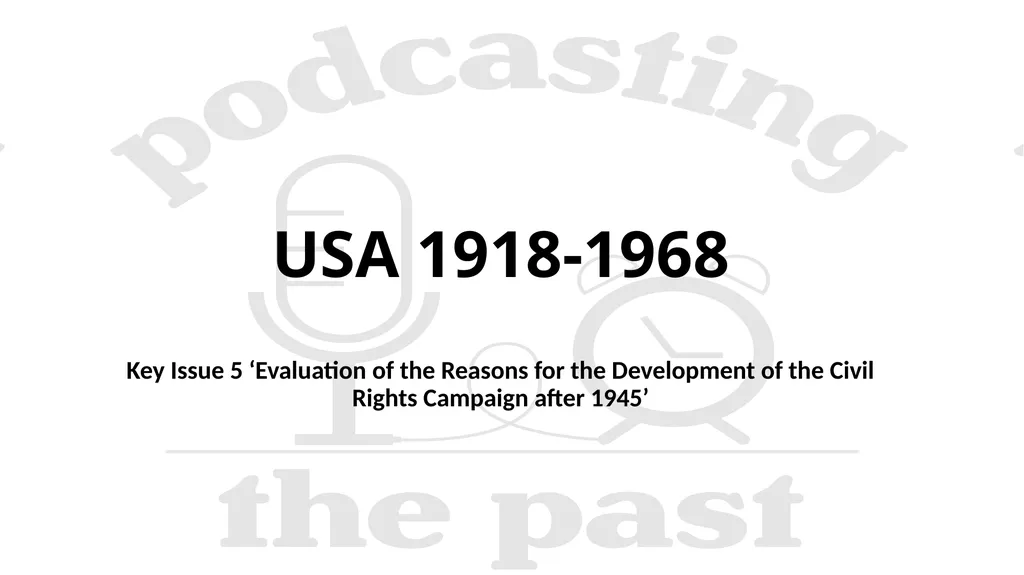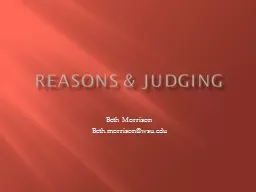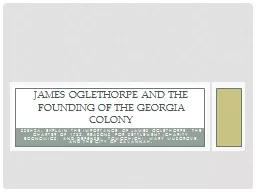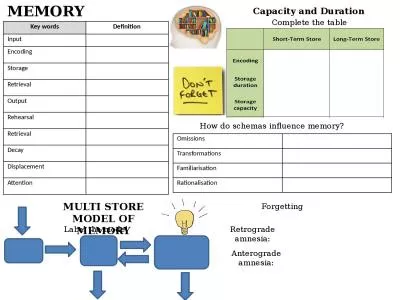Key Issue 5 ‘Evaluation of the Reasons for the
Author : tatyana-admore | Published Date : 2025-08-04
Description: Key Issue 5 Evaluation of the Reasons for the Development of the Civil Rights Campaign after 1945 USA 19181968 Factors Continuation of prejudice and discrimination Experience of Black servicemen in WW2 Role of Black civil rights
Presentation Embed Code
Download Presentation
Download
Presentation The PPT/PDF document
"Key Issue 5 ‘Evaluation of the Reasons for the" is the property of its rightful owner.
Permission is granted to download and print the materials on this website for personal, non-commercial use only,
and to display it on your personal computer provided you do not modify the materials and that you retain all
copyright notices contained in the materials. By downloading content from our website, you accept the terms of
this agreement.
Transcript:Key Issue 5 ‘Evaluation of the Reasons for the:
Key Issue 5 ‘Evaluation of the Reasons for the Development of the Civil Rights Campaign after 1945’ USA 1918-1968 Factors Continuation of prejudice and discrimination Experience of Black servicemen in WW2 Role of Black civil rights organisations Role of Martin Luther King Emergence of effective Black leaders Context A key obstacle faced by Black Americans in the campaign for equality was the lack of established organisations. Several individuals emerged throughout the 1920s who demanded change for Black communities, however, none were united in purpose. WEB Du Bois campaigned for equality for Blacks in every aspect of daily life. Marcus Garvey demanded a ‘return to Africa’ and an affirmation of Black culture and pride. Some argue that the roots of the Black civil rights movement in the 50s and 60s came from the ideas of these individuals. In particular, WEB Du Bois’ group, the National Association for the Advancement of Coloured People (NAACP), which was established in 1909, tirelessly fought against the Jim Crow Laws in the early decades of the 20th century and was responsible for some of the most significant and highly publicised Civil Rights Campaigns of the post-war era. Furthermore, it could be argued that the 1960s marked a period of change for many Americans as it witnessed the move from previous acceptable social norms to the demand for change. After the end of World War Two the promise of a new world defined by peace and freedom jarred with the daily experiences of many Black Americans. Continuation of Prejudice and Discrimination – Background Background: In the USA in the 50s, ‘Jim Crow’ laws still existed, and lynching went unpunished in many southern states. Violence, lynching and beating of Black people, which had declined since the 20s increased again after WW2. There was an increasing awareness of racial discrimination through the spread of television and news reporting of civil rights cases and lynching which went unpunished Continuation of Prejudice and Discrimination – Knowledge (K1) Brown V Topeka: 7-year-old Linda Brown was Black and the local school in Topeka, Kanas, was for whites only. Linda’s father thought it was unfair that Linda should go to a school further away with less resources than the white school. (K1) With the aid of the NAACP, Linda Brown’s father took the Topeka School Board to court. This was called ‘ Brown versus the Topeka Board of Education’. (K1) Brown lost but appealed














